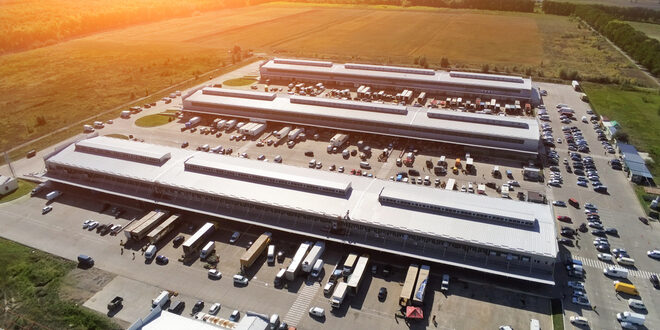The days of a perpetually red-hot industrial market in the Inland Empire – record sales and leases, high vacancy rates, plenty of speculative development, and an endless absorption of open space – may be a thing of the past.
At the very least, with the start of a new year less than one month away, growth of the logistics manufacturing sector in Riverside and San Bernardino counties has been put on hold, and it might stay that way for a while.
“I think the first half of 2024 will be more of what we’ve seen in 2023, which has been a little slow,” said Chuck Belden, executive vice chair and a longtime industrial specialist with Cushman & Wakefield Ontario. “After that, the market might improve a little, but if it does I don’t think it will improve very much.”
The Inland Empire’s industrial market won’t be at full strength as it heads into 2024 if the most recent data is any indication.
The region’s industrial vacancy rate was nearly four percent, with 25.6 million square feet of open space ready to be leased, according to Voit Real Estate Services.
During the third quarter of 2022, industrial vacancy in Riverside and San Bernardino counties was a little more than one percent, with approximately $19.8 million square feet of available open space.
Leases and sales fell by nearly 10 million square feet during the third quarter, a 58 percent annual year-over-year decline, while net absorption was 1.5 million square feet, down from 3.1 million square feet year-over-year, Voit reported.
Average lease rates during the third quarter were $1.41 a square foot, up 52 cents a square foot from one year earlier. That 58.4 percent increase was the result of a demand for first-generation space, a trend that slowed down as the quarter ended, according to Voit.
Perhaps the biggest concern as 2024 approaches is buildings that cover 100,000 to 250,000 square feet. Availability in that category is above 12 percent, and more structures of that size are scheduled to be delivered in the next several quarters.
The Inland Empire industrial sector has “slowed substantially” in 2023 and its performance during the last half of the year has been baffling, even to the most experienced market watchers, according to Voit.
In 2024, property owners will have to approach the market with “agility and foresight” and seize upon opportunities whenever they become available.
Some sectors of the Inland industrial market continued to meet expectations, this year, but a drop in transactions, growing vacancy, and a slowdown in construction—all signs of a slowing market—have been offset by lease rates and property values that are much higher than they were before the pandemic, the report states.
One year ago, Paul Earnhart, senior vice president with Lee & Associates Ontario, was predicting that 2023 “would be a good year, overall” for the Inland industrial market.
This year, he’s not so confident. For the first time in about 15 years, the Inland industrial market isn’t growing, and it doesn’t appear that trend will end soon.
“Absorption is down, and that’s never a good sign,” said Earnhart, who has been negotiating warehouse-distribution deals in the Inland region for more than 25 years. “The industrial market has been slow for a while, I think it will continue to be a slow market, maybe for the next year and a half.”
Soft spots in the economy are one reason the Inland industrial market has slowed during the past 12 months. One soft spot, high interest rates, has weakened the economy and made it more difficult to get a construction loan because banks are reluctant to loan money.
“It’s become very difficult for anyone to get equity, which means you aren’t going to see a lot of growth,” Earnhart said.
Rather than boom or bust, 2024 will probably be an erratic year for the Inland industrial market, according to Lisa Anderson, founder and president of LMA Consulting Group Inc. in Claremont.
Absorption and lease rates probably will be flat during the next 12 months, while vacancy will be up, but only slightly, Anderson predicted.
“I expect an up and down year, for several reasons,” said Anderson, whose firm specializes in management strategies and publishes a monthly online newsletter on supply chain issues. “Interest rates remain a little high, and there is still a lot of concern about the economy and the direction it’s going. Also, more people are starting to understand that it’s difficult, and a little risky, to operate a global supply chain.”
Owners of Inland industrial properties should prepare for a bumpy ride in 2024.
“I expect the [Inland] industrial market to be up and down in 2024,” Anderson said. “There will be good news and bad news, and the market will react to both.”
 IE Business Daily Business news for the Inland Empire.
IE Business Daily Business news for the Inland Empire.


